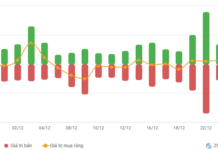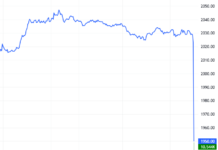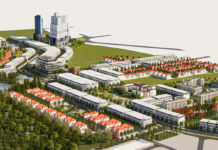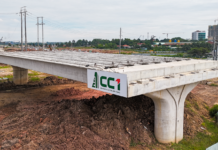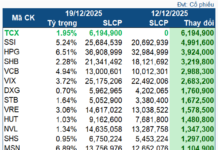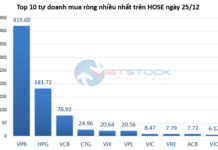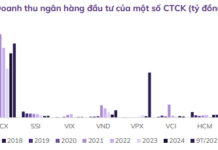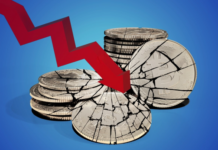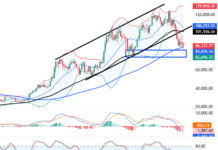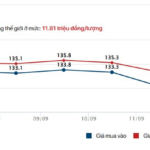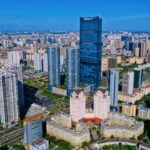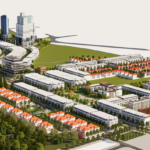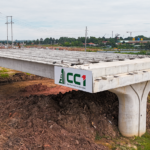State Bank of Vietnam Maintains Interest Rates Amid Stable Economic Growth
According to the Q4 2025 Global Economic Outlook Report by UOB Bank’s Global Market and Economic Research Division (Singapore), inflation in Vietnam has yet to show significant signs of easing.
As of July, year-to-date cumulative headline inflation reached 3.3%, compared to the 2024 average of 3.6% and 3.26% in 2023. The primary drivers of inflation remain housing and construction materials (up 5.9% year-on-year, accounting for 18.8%) and healthcare services (up 18% year-on-year, accounting for 5.4%).
Given the positive growth outlook for the second half of 2025 and pressure on the VND exchange rate, these factors will limit the State Bank of Vietnam (SBV)’s ability to ease monetary policy. UOB forecasts that the SBV will keep the refinancing rate at 4.5%. In the event of a sharp decline in business conditions and the labor market, the SBV may consider lowering the refinancing rate to the record low of 4% seen during the pandemic, though this is not the baseline scenario.
Speaking at the macroeconomic update on the afternoon of September 17, 2025, Mr. Đinh Đức Quang, Director of Currency Business Division at UOB Vietnam, predicted: “The regulator will maintain policy rates in the short term and only begin cutting rates when the U.S. market’s aggressive rate reduction path is certain. Under UOB’s positive forecast, the U.S. Federal Reserve could cut USD rates three times by a total of 0.5-0.75%, bringing the USD rate to around 3.75% by year-end. If this scenario materializes, the SBV may consider reducing VND rates by 0.25-0.5% by late 2025, boosting growth for 2026.”
 Mr. Đinh Đức Quang – Director of Currency Business Division, UOB Vietnam
|
Credit Growth Projected at 19-20% in 2025
According to Mr. Quang, since Q4 2024, a notable trend has emerged among central banks actively cutting rates to support economic growth and job creation amid persistent challenges and inflationary pressures.
In the U.S., the world’s largest market with far-reaching influence on global trade and investment, the Federal Reserve has adopted a cautious stance on rate management. The USD rate remains above 4%, significantly higher than historical averages, despite the dollar’s status as the most liquid and widely held reserve currency globally. However, stubborn inflation since the COVID-19 pandemic has prevented the Fed from aggressively cutting rates. Recent fluctuations in tariffs have also made it difficult for the Fed to assess their future impact on inflation.
In Vietnam, the overall outlook remains positive, with robust economic growth, inflation within target, stable interest rates, and a 4% exchange rate fluctuation since the year’s start. Vietnamese regulators are tasked with balancing multiple objectives—fostering economic growth, controlling inflation, stabilizing rates and exchange rates, and gradually liberalizing foreign investment flows. Achieving all these goals simultaneously remains a significant challenge.
UOB believes that with annual inflation averaging around 4% and a growth target exceeding 8% (or 9-10% in the coming years), the current VND deposit rate of 5%, short-term lending rates of 6-7%, and medium-to-long-term lending rates of 8-9% are appropriate for maintaining market equilibrium. Mr. Quang also forecasts that with current interest rates, credit growth for 2025 could reach 19-20%.
– 21:00 17/09/2025
Sustainable Development: The New Competitive Edge for Vietnamese Businesses
At the “Green for Growth: How Sustainability Unlocks New Opportunities” seminar, co-hosted by EuroCham Vietnam, UOB Vietnam, and partners in August 2025, Mr. Jason Yang, Director of Sustainable Development at UOB Vietnam, shared strategic insights on the role of sustainability in Vietnam’s next phase of economic growth.
Unlocking Long Xuyên’s Real Estate Potential
Once considered a relatively quiet real estate market compared to other major cities in the Western region, Long Xuyên is now experiencing a powerful resurgence, capturing the attention of investors. This transformation is fueled by two golden factors: a revolutionary upgrade in transportation infrastructure and a robust foundation in the service-based economy.

